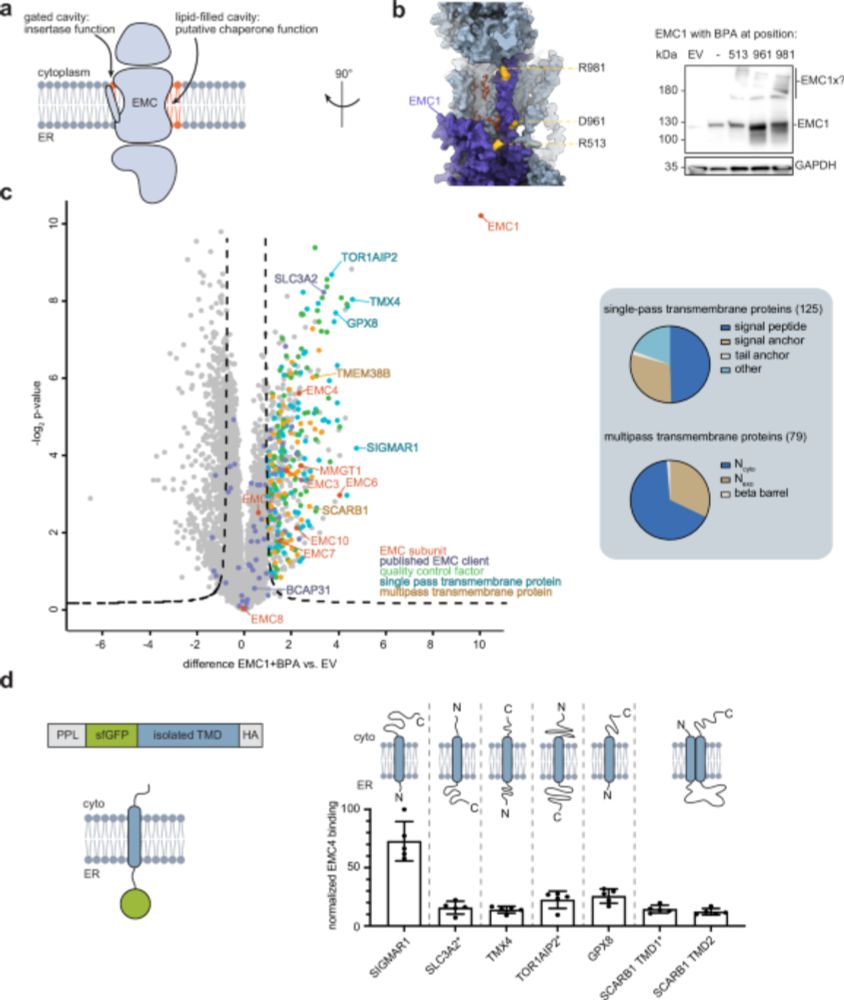
Excited to share our latest study in @natcomms.nature.com , where we characterize the chaperone function of the ER membrane protein complex (EMC)—supporting membrane protein biogenesis beyond insertion!
1/9
www.nature.com/articles/s41...
@jakobfarnung.bsky.social
PostDoc Schulman Lab, MPI Biochemistry; formerly Bode Lab, ETH Zürich

Excited to share our latest study in @natcomms.nature.com , where we characterize the chaperone function of the ER membrane protein complex (EMC)—supporting membrane protein biogenesis beyond insertion!
1/9
www.nature.com/articles/s41...
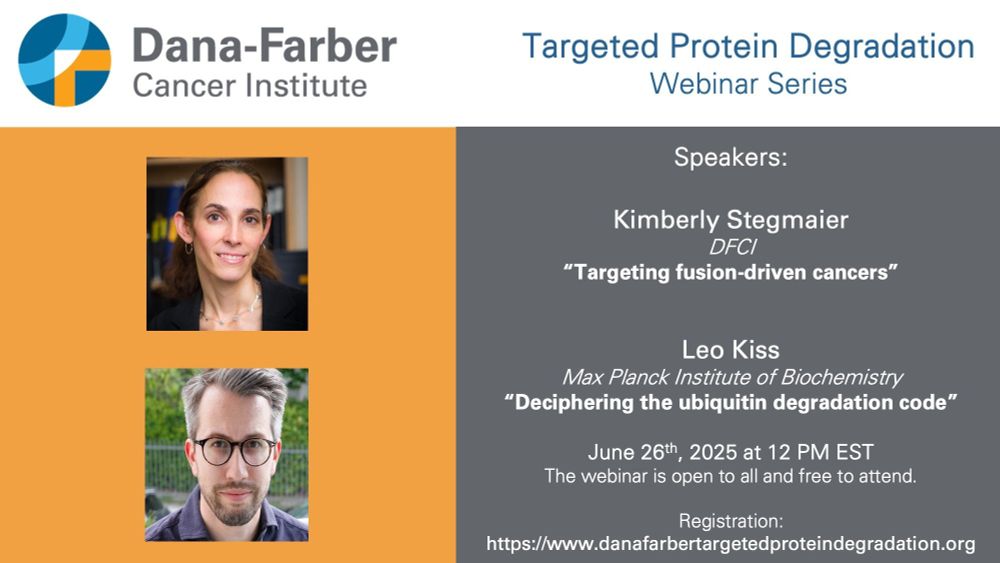
Excited about #ubiquitin and #TPD ?
Then join us tomorrow for the latest instalment of the @danafarber.bsky.social Targeted Protein Degradation Webinar where Kimberly Stegmaier and I will present our latest work.
dfci.zoom.us/webinar/regi...

Congratulations to our own Lucas Farnung @lucas.farnunglab.com who has been named as one of 30 Freeman Hrabowski Scholars for 2025 by the Howard Hughes Medical Institute (HHMI). So well deserved deserved !! www.hhmi.org/programs/fre...
18.06.2025 15:25 — 👍 28 🔁 6 💬 0 📌 0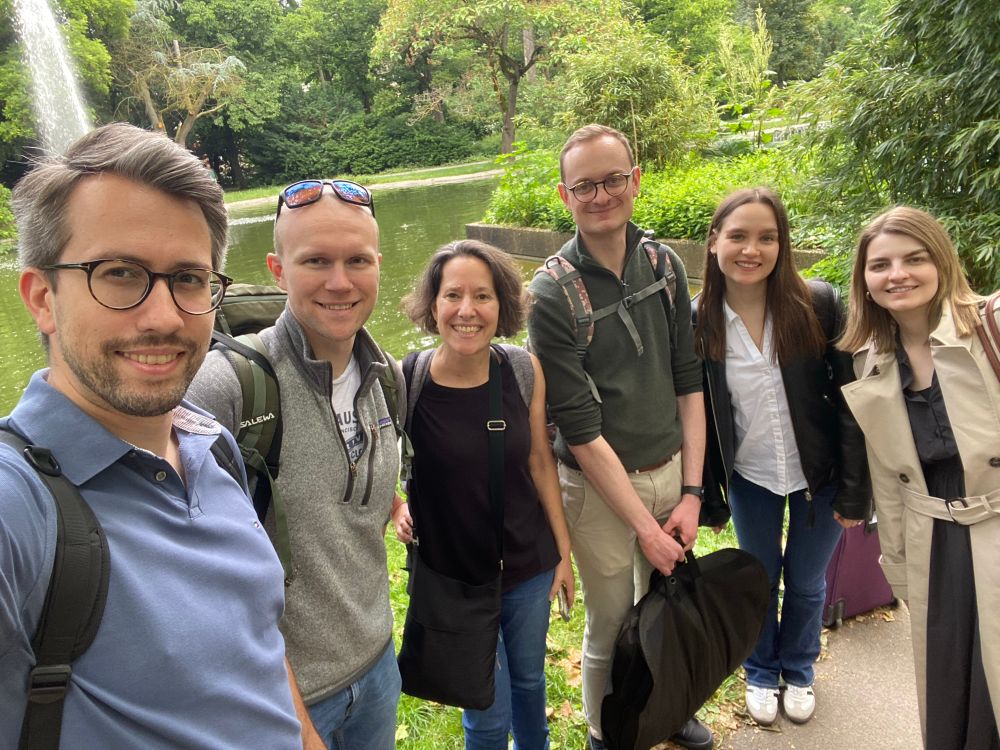
Schulman lab is ready for the GRK2243 Symposium: Understanding ubiquitination: from molecular mechanisms to disease in würzburg
#wUeBI2025 @grk2243.bsky.social
@jakobfarnung.bsky.social @samuelmaiwald.bsky.social @hannahbkmpr.bsky.social
Super cool story on branched UB chain formation. Congrats Sam!
26.05.2025 09:48 — 👍 10 🔁 3 💬 1 📌 0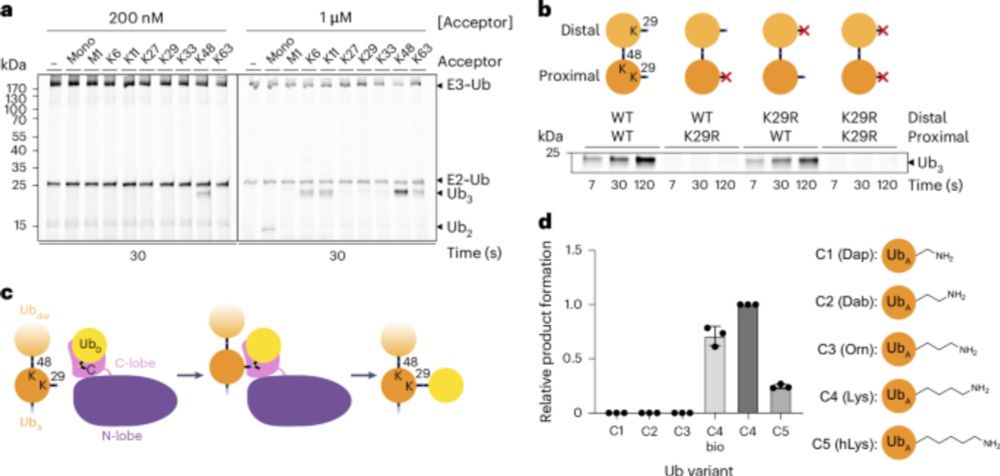
Excited to share our latest study on how K29/K48-branched #ubiquitin chains are forged by the #E3 ligase TRIP12, and how this suggests a consensus mechanism for chain formation by HECT E3s!
@natsmb.nature.com
1/7
www.nature.com/articles/s41...

🧬🎉Thrilled to share our new chromatin remodeling study! We reveal three states of human CHD1 and identify a novel "anchor element" that interacts with the acidic patch—conserved among remodelers. Our structures clarify mechanisms of remodeler recruitment! Link: authors.elsevier.com/a/1l2ik3vVUP...

New Preprint: We have solved the structure of the proteasome in complex with two different ubiquitin chains: www.biorxiv.org/content/10.1... This work is spearheaded by PhD Student Sascha Amann
Let me walk you through it 🧵 1/9
If you are interested in Ubiquitin this paper is a must read! Congrats Leo!
24.03.2025 15:08 — 👍 2 🔁 2 💬 1 📌 0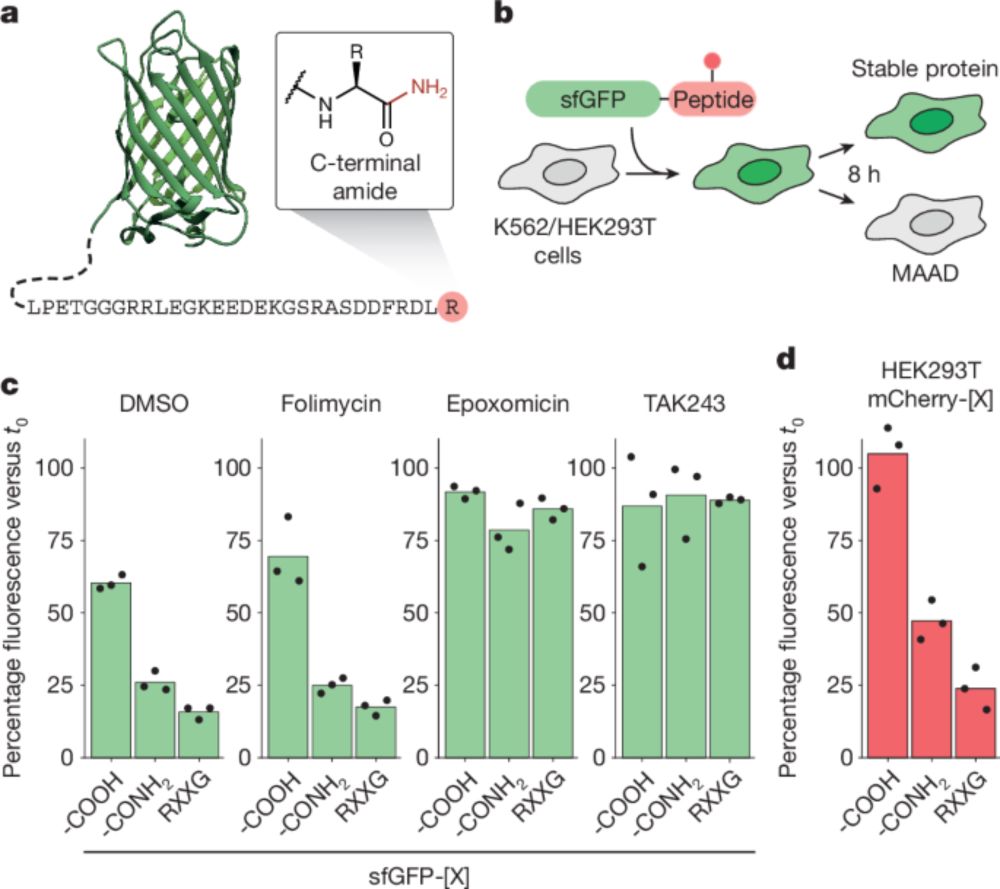
It's finally out – actually out and in print! Many thanks to @jcornlab.bsky.social @matthiasmuhar.bsky.social @jakobfarnung.bsky.social and all the fantastic collaborators. What started as pure curiosity lead to an amazing find!
www.nature.com/articles/s41...
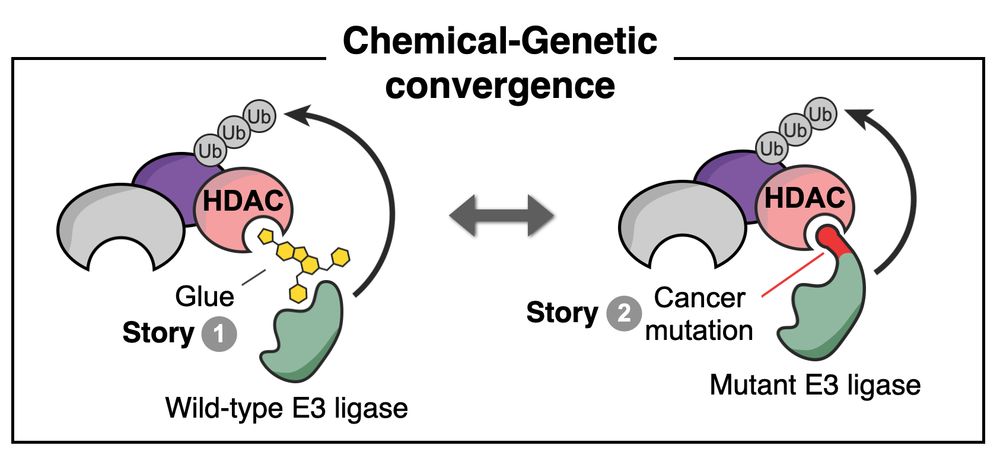
Today in @nature.com we share our back-to-back stories with Ning Zheng’s lab revealing chemical-genetic convergence between a molecular glue degrader & E3 ligase cancer mutations. 1/5
12.02.2025 16:20 — 👍 82 🔁 37 💬 5 📌 5
Excited about mechanistic biology and processes in the cell's nucleus? Join our lab as a post-doctoral researcher! We have a state-of-the-art cryo-EM facility (new microscopes coming!), a brand-new lab space, and a vibrant community at HMS!
DM/email me or check farnunglab.com for more info.
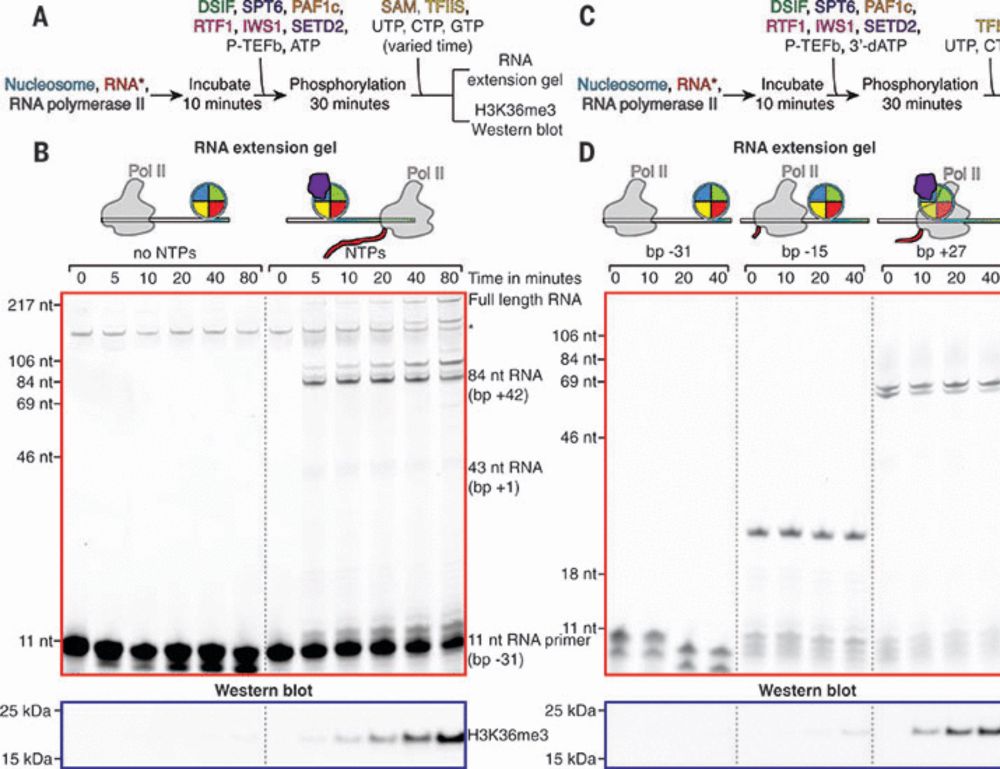
Our story on the mechanism of co-transcriptional histone mark deposition is now officially out: www.science.org/doi/10.1126/...
30.01.2025 22:16 — 👍 55 🔁 18 💬 0 📌 1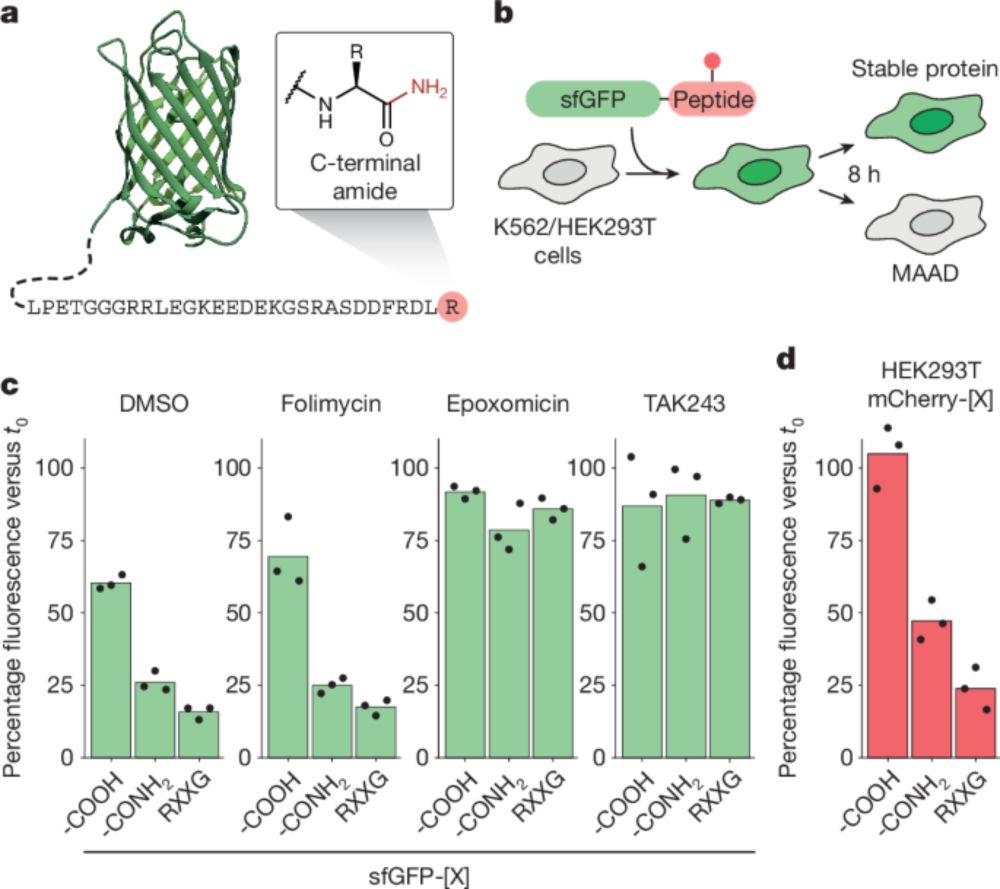
Cells are filled with toxic stuff that damages healthy proteins. Is that garbage just left to rot on the curb? No way! Ubiquitin ligases have evolved to recognize chemical damage and clean it up! www.nature.com/articles/s41...
30.01.2025 12:30 — 👍 110 🔁 37 💬 2 📌 1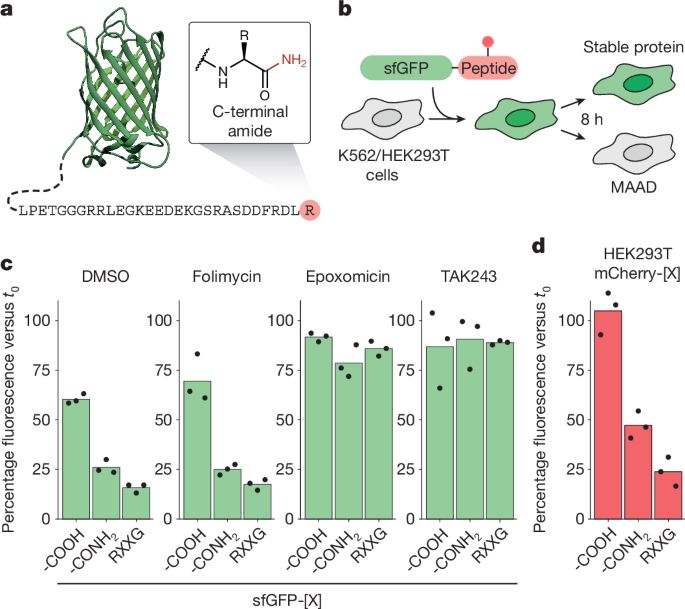
scary but fascinating - cells have a degradation pathway that hunts down C-terminal scars (amides!) on damaged proteins. just wow. chemical biology plus CRISPR at its best. big congrats to all authors!
www.nature.com/articles/s41...
Very excited to highlight @jcornlab's beautiful work on the E3 ligase SCF-FBXO31, which recognizes chemically damaged proteins. Mutations in FBXO31 cause disease by substrate-rewiring, really cool. Congratulations to all authors!
rdcu.be/d7WGc
Super exiting new work revealing a novel quality control pathway for c-terminal amides!
29.01.2025 17:12 — 👍 9 🔁 3 💬 0 📌 0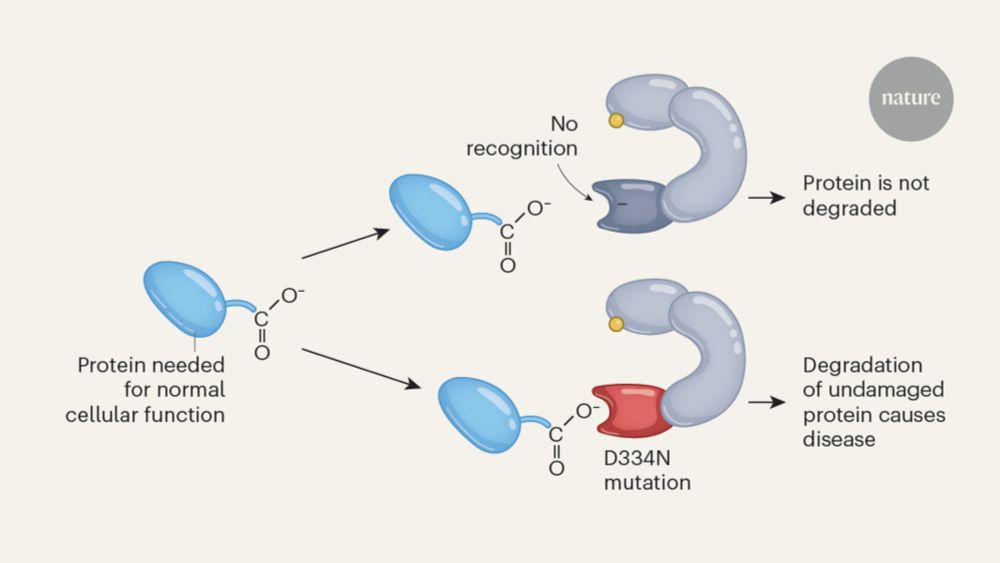
On the degradation of damaged cellular proteins via C-terminal amidation. By Alfred Freeberg & @micharapelab.bsky.social. @ispt-proteinterm.bsky.social www.nature.com/articles/d41...
29.01.2025 17:34 — 👍 19 🔁 6 💬 0 📌 0And check out a News & Views written by @alfredfreeberg.bsky.social and @micharapelab.bsky.social for highlighting our work. Thank you!
29.01.2025 16:39 — 👍 2 🔁 0 💬 0 📌 0This project really has been a great journey that was only possible by combining chemical and biological expertise. Special thanks also goes out to Raphael Hofmann who started this project with @matthiasmuhar.bsky.social!
29.01.2025 16:29 — 👍 1 🔁 0 💬 1 📌 0Since our preprint we have added exciting new data in collaboration with the Schulman lab @mpibiochem.bsky.social, @martinjinek.bsky.social and Jessberger lab that further underpin the quality control function of FBXO31.
29.01.2025 16:29 — 👍 0 🔁 0 💬 1 📌 0
Using a genome-wide CRISPR screen we identified the SCF-component FBXO31 as a selective reader of C-terminal amides. FBXO31 is a quality control factor, agnostically recognizing any amidated C-terminal amino acid. We propose that oxidative stress can cause spontaneous fragmentation of the peptide-backbone to leading to formation of C-terminally amidated proteins (CTAP).
29.01.2025 16:29 — 👍 1 🔁 0 💬 1 📌 0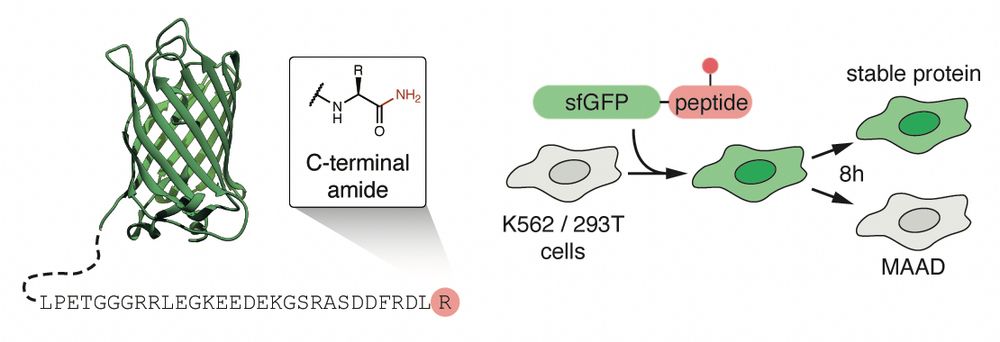
We combined chemical biology and genetic tools to devise a cellular screening platform to identify modified amino acid degrons (MAAD) that induce protein degradation. Surprisingly the smallest possible change from C-terminal carboxylic acid to an amide induces efficient degradation.
29.01.2025 16:29 — 👍 0 🔁 0 💬 1 📌 0
🎉Super excited to share our story on how the substrate receptor FBXO31 functions as a quality control factor by recognizing amides. This has been an amazing collaboration between Bode lab and @jcornlab.bsky.social. Special shutout goes to @matthiasmuhar.bsky.social www.nature.com/articles/s41...
29.01.2025 16:29 — 👍 84 🔁 35 💬 3 📌 4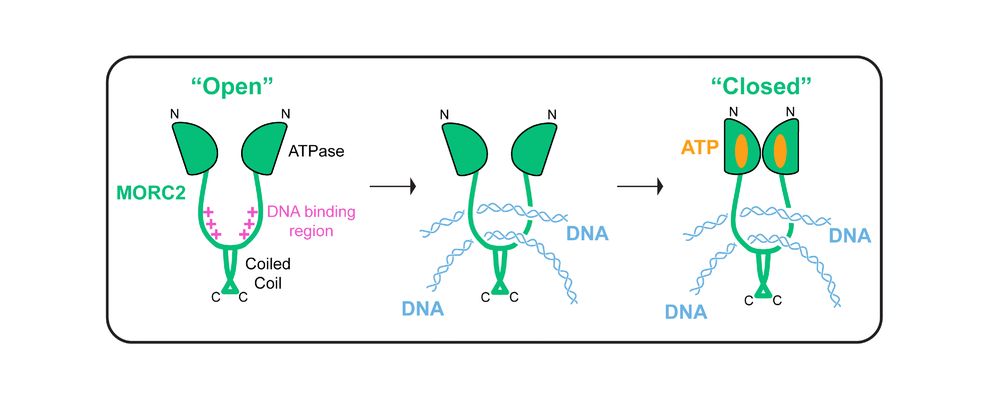
Our paper describing a novel DNA binding mode for MORC2 is published! Congratulations to Nika Fendler on her first, first author paper. This was an epic effort and revealed many new and unpredicted functions for MORC2. You can read about it here: tinyurl.com/MORC2-DNA
31.12.2024 15:23 — 👍 28 🔁 5 💬 1 📌 1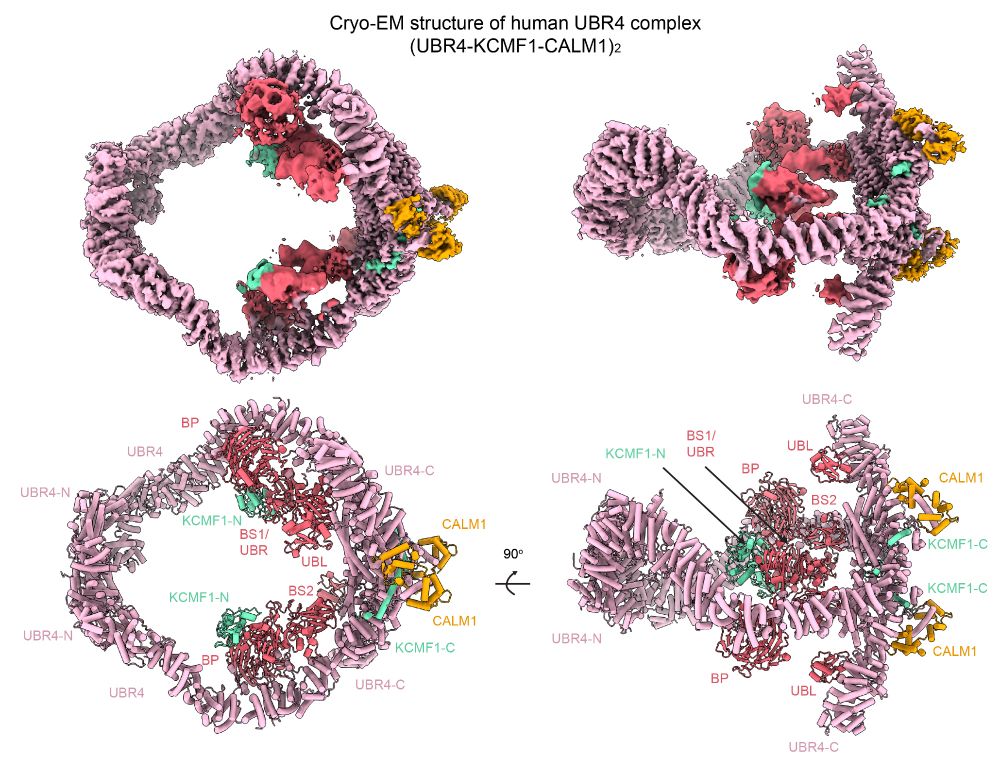
Architecture of the 1.3 MDa complex of human UBR4 (2 x UBR4/KCMF1/CALM1). Picture shows top and side views of the cryo-EM density map and the modeled structure, colored by protein components and domains.
🎄 xmas preprint 🎄 we are excited to share our cryo-EM structure of UBR4 in complex with KCMF1 and CALM1. the PQC ligase forms a massive ubiquitination arena, primed to amplify ubiquitin chains (E4 activity) and boost degradation of defective proteins. www.biorxiv.org/content/10.1...
21.12.2024 10:46 — 👍 132 🔁 37 💬 3 📌 4Ever wondered how transcription choreographs histone modifications? Our work reveals the basis of co-transcriptional H3K36me3 by SETD2. We visualize how a histone writer coordinates with the transcription machinery! This is the magnus opus of @jonmarkert.bsky.social!
tinyurl.com/setd2
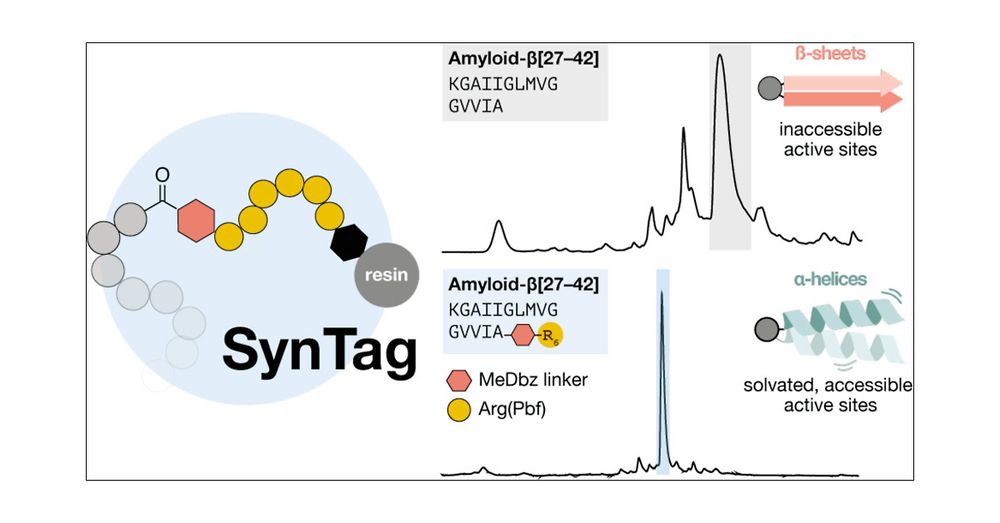
Our Synthesis Tag (SynTag) for the synthesis of aggregating peptides and proteins is now published in JACS 🥳 Congratulations to first authors Héloïse & Elyse and everyone else involved ✨✨
pubs.acs.org/doi/10.1021/...

SAVE THE DATE 🗓️Ubiquitin & Friends Symposium: 8-9 May 2025 in Vienna!
Registration will open🔜 Keep an eye out for the announcement 👀
✨guest speaker lineup👇🧵 +talks from abstracts! Great chance for #ECRs to meet with peers & experts in a friendly setting!
🔗 www.protein-degradation.org/symposium/
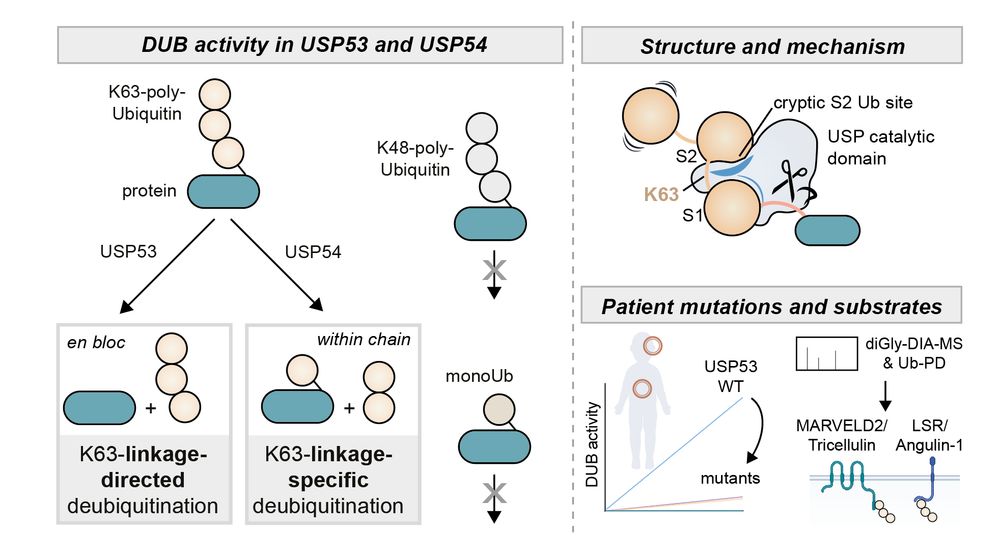
Could't think of a better inaugural post here. Very excited to share that our manuscript on the "Discovery and mechanism of K63-linkage-directed deubiquitinase activity in USP53" was published today at Nature Chemical Biology. Congratulations Kim, Kai, and all authors! www.nature.com/articles/s41...
25.11.2024 16:37 — 👍 109 🔁 18 💬 6 📌 2